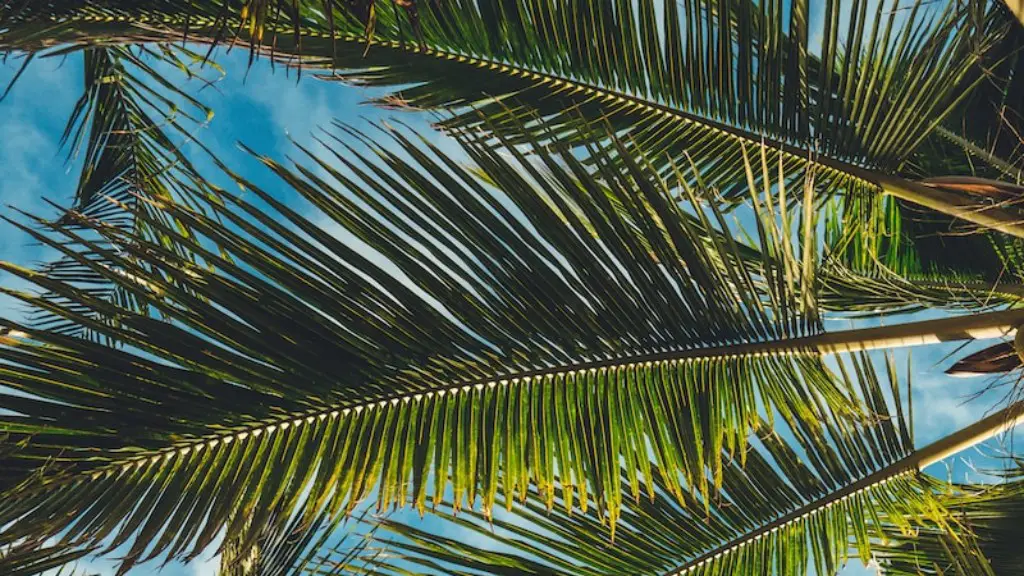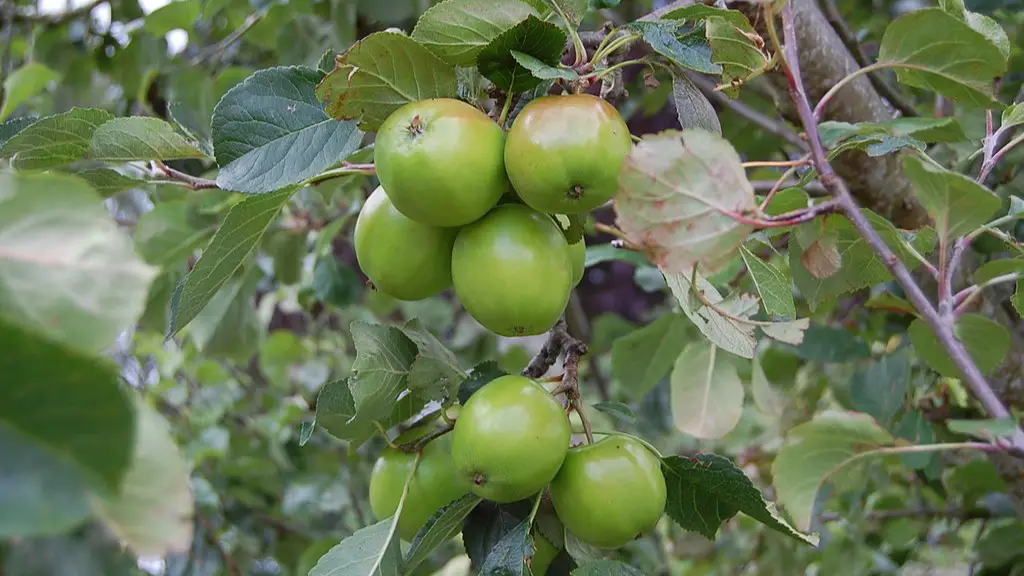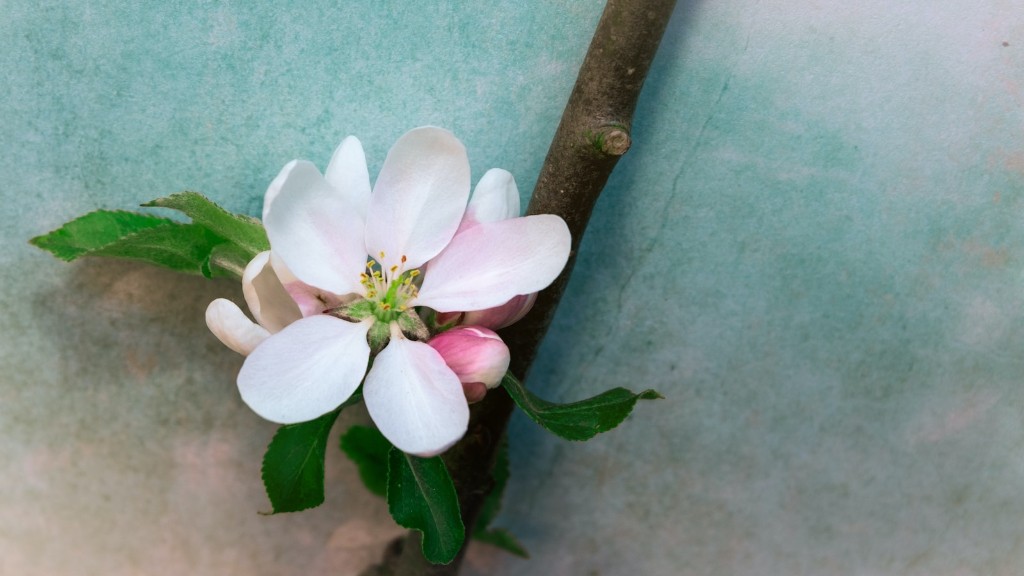What is Staking?
Staking a palm tree means providing structure supports to it while ensuring that the tree is secure and stable. It helps to prevent the tree from being blown over in heavy winds or damaged in storms, and can be done on both indoor and outdoor trees. Staking can also help trees to improve their root system leading to better growth.
Choose the Support Material
The type of material used to stake a small palm tree depends on the size of the tree. Wood and metal stakes are both appropriate options for larger palms, while smaller trees can be effectively staked with garden twine or synthetic rope. These materials are strong and flexible, making them ideal for supporting palm trees as they grow.
Position the Stakes
The stakes should be positioned close to the tree’s trunk in a triangular formation. Stakes should be placed about one foot away from the trunk in each direction, and the stakes should be spaced at roughly even intervals. This will provide a base for the trunk to be securely fastened and will ensure that the tree is evenly supported.
Secure the Stakes
Once the stakes are positioned it is necessary to secure them to the tree. The stakes should be fastened tightly around the tree in an X-shape with the twine or rope crossing each other in the centre and winding around the stakes. This will provide a strong support system for the tree trunk.
Add Protection Around the Trunk
To add additional protection, it is a good idea to wrap the tree with a protective material such as burlap. This will provide additional support and protection from pests and the wind. It is important to ensure that the protective material is securely fastened to the stakes, as it will help to prevent the tree from being damaged in high winds or stormy weather.
Continue to Check Stakes and Protective Material
Once the stakes are in place and the protective material has been added, it is important to continue to check the condition of the stakes and the protective material. Any loose or damaged stakes should be replaced immediately, and the protective material should be checked regularly to make sure that it is in good condition.
Remove the Stakes and Protective Material Properly
Once the tree has established itself and its root system has grown to support the tree, the stakes and protective material should be removed. This is to ensure that the tree does not become dependent on the supports, which can prevent its root system from growing strong and healthy. The stakes and protective material should be carefully removed to avoid damaging the tree.
Cultivate the Tree for Better Growth
After staking a small palm tree, it is important to ensure that the tree has enough water and sunlight to promote healthy growth. It is also important to monitor the tree’s soil to make sure it is retaining enough moisture and is free of pests. Regular applications of fertilizer and mulching can also help promote healthy growth.
Choose the Right Environment
In order for a small palm tree to thrive, it is important to select an area with the right environment. The tree should be positioned in a sunny spot and away from any exposed areas that are prone to high winds and storms. For indoor trees, it is important to select an area that is large enough to accommodate the tree’s growth.
Ensure Moderate Watering
Once the tree is staked, it is important to ensure that it is watered regularly. Palm trees should be watered about once or twice a week, depending on the environment. The soil should be kept moist but not wet, and water should be applied directly to the soil and not on the leaves.
Pay Attention to Fertilizer Application
Fertilizer is an important part of maintaining a healthy palm tree. This can be done with a slow release fertilizer that is applied once every two or three months. When applying fertilizer, it is important to follow the instructions on the package in order to ensure that the tree is not over or under fertilized.
Non-Chemical Treatment Options
In addition to fertilizer, there are other non-chemical treatments that can be used to help a small palm tree grow. These include composting, pruning and mulching, which can help to improve soil nutrition and keep the soil moist. These treatments should be applied consistently in order to promote healthy growth.
Pest Management
Another important aspect of maintaining a healthy palm tree is pest management. It is important to check the tree regularly for any signs of pests, such as aphids or scale. If pests are discovered, there are several non-chemical ways to control them, such as using predatory insects or natural oils.
Maintaining Cleanliness Around the Tree
It is also important to keep the area around the tree clean. This means clearing away fallen leaves, debris and other debris that can attract pests. Regular weeding, mulching and trimming can help keep the area around the tree neat and tidy.
Provide Wind Protection When Necessary
Finally, it is important to provide protection from strong winds whenever necessary. This can be done by creating a barrier around the tree that will help to break the wind and reduce damage to the tree. It is important to select wind-resistant plants or structures to create the barrier, such as bamboo or shrubs.



